AZRAQ REFUGEE CAMP, JORDAN – The United Nations has built a city from scratch in the middle of the Jordanian desert.

And it’s quickly filling with people, at a rate of roughly 250 per day.
Welcome to Azraq Refugee Camp, the newest refugee camp in the Middle East. In a few short years, it could be one of the world’s largest.
Right now, Azraq houses about 7,159 Syrian refugees. There are enough corrugated-steel shelters and facilities to house about 50,000 people, and there are plans to expand to accommodate a population of 130,000 if necessary. That’s larger than Kingston, Ontario or Coquitlam, B.C.
But that expansion only happens if the UN and international organizations running the camp can afford it. They have $320 million on hand – enough to keep going for a little longer. But if they want to build tens of thousands of new shelters – let alone keep feeding and providing care to those there already – they need an additional $756 million over the rest of the year. Otherwise, programs will have to be cut, planned shelters left unconstructed.
Photo gallery: Inside Azraq Camp
Azraq is an experiment.
Most refugee camps are set up quickly, in haphazard fashion and in response to a disaster. But this is a carefully planned community, designed to accommodate the tens of thousands of refugees that continue to flee Syria years into a civil war that shows no sign of stopping.
Zaatari Camp, in northern Jordan, was built in about two weeks in 2012 as Syrian refugees streamed across the nearby border, and has grown significantly since then. Its population of about 91,110 makes it the fourth-biggest refugee camp in the world.
As the Syrian conflict dragged on, the international community had time to plan for a new camp. Azraq took about a year to build, from the moment the Jordanian government approved the location to the day it opened on April 30, 2014.
- Life in the forest: How Stanley Park’s longest resident survived a changing landscape
- Bird flu risk to humans an ‘enormous concern,’ WHO says. Here’s what to know
- Roll Up To Win? Tim Hortons says $55K boat win email was ‘human error’
- Mental health support still lacking 4 years after mass shooting: Nova Scotia mayor
A month later, Azraq Camp is eerily quiet, with rows of empty shelters stretching off into the desert. The current inhabitants occupy only a tiny part of the existing camp. Laundry strung between the shelters is often the only sign that anyone lives there at all.
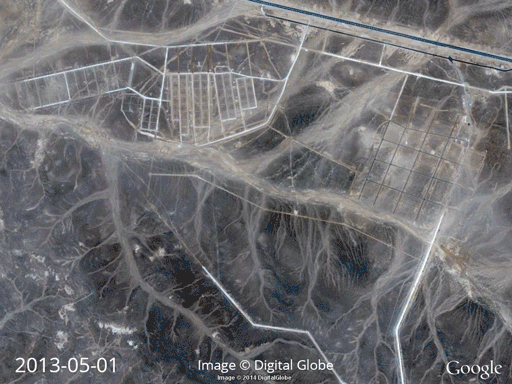
That will soon change, though. By the end of this year, the United Nations High Commission for Refugees anticipates the population will more than quadruple to at least 40,000. They will stay “as long as they will not be able to return to Syria,” said Bernadette Castel-Hollingsworth, the camp manager with UNHCR.
Mohammed came here one week ago, after his family, his sister’s and brother’s families walked the week-long journey from Damascus. His own family and his sister’s family arrived safely. His brother’s wife and children made it; he’s seen no sign of his brother.
He doesn’t want his last name printed because he’s afraid of the Syrian authorities.
“We left Syria just with our clothes,” he says. “Everyone has only the set that they were wearing when they left.
“I want new clothes,” interrupts his young daughter.
“It’s very, very hard here,” he says. “It’s not like our life in Syria. It’s very hard to have a normal life here.”
He misses electricity, and easy access to water and food. The market and the water pump are far from their one-room shelter here.
When asked what he will do next, Mohammed says he doesn’t know. “God,” he said, in English, shrugging.
Photo gallery: Azraq’s supermarket
While most refugee camps feed their inhabitants with cooked meals and rations, Azraq attempts to give its residents a more normal life with a grocery store. Refugees get vouchers they can use to buy whatever products they need.
Along with variety, the stores and vouchers “give families a sense of normalcy, a sense of dignity. Rather than standing in line and taking handouts, they can come here, they can choose for themselves,” says Dina Elkassaby, a public information officer for the World Food Programme.
But this comes with its own challenges. The camp store sits half a kilometre away from the nearest shelters, easily twice that for many village residents. The dusty road to the market is filled with people carrying grocery bags in 30-degree heat. The World Food Programme plans to start a shuttle bus service, says Elkassaby.
Inside, the Sameh Market looks like other locations in the brand-name Jordanian grocery chain. There are aisles of canned goods and other products, a deli counter, a butcher’s counter and a section filled with fresh produce. And it’s the most bustling place in the camp.
This store serves Village 3 – the only populated village of at least seven planned communities in the camp, though another is set to open soon. The idea is to divide an anticipated influx of refugees into smaller “villages” of about 10,000-15,000 people. Each will have its own store, playgrounds, police post, medical clinic, community centres and schools, staffed by the many NGOs working in the camp. This means shorter lineups, less congestion and – hopefully – better access to services.
But so far this is the only market, far from any inhabited shelters. People line up with their baskets and carts to check out, paying with the paper vouchers provided by the World Food Programme.
And it isn’t cheap: Items cost the same as they would in Amman – shockingly high to many of the Syrian refugees Global News spoke to.
Mohammed says that the voucher for 10 Jordanian dinars (about $15.37 Canadian) each person is given every 15 days isn’t enough.
Refugees also receive daily fresh bread rations.
The camp prices match Jordanian markets, says Elkassaby, “to ensure that the voucher program does not disrupt the existing market in Jordan and to protect refugees from shops using inflated prices.” The program monitors supermarket prices to ensure they remain levels it deems appropriate.
But Mohammed’s children still complain of hunger, he says.
“We can have a life without electricity. But we can’t have a life without bread.”
In September, the paper vouchers given to camp residents will be replaced with a debit card, which the World Food Programme will load with cash for use at 60 partner shops across Jordan. It looks just like a credit card and is already being used by Syrian refugees who live outside camps in Jordan and Lebanon.
“I shop at Sameh Mall in Amman, and sometimes there are refugees in line using these. Unless I look really closely, I wouldn’t know that that person is a refugee,” Elkassaby said.
Photo Gallery: Refugees’ stories
The burden on Jordan
Jordan is a small country of about 6.6 million people, according to an estimate on the Department of Statistics website.
Roughly 9 per cent of the population is now Syrian refugees. There are just under 600,000 of them living in Jordan, most of them outside the refugee camps.
This would be a challenge for any country. But Jordan is the fourth most water-scarce country in the world, according to a November 2013 United Nations report: 81 per cent of rural households report running out of water once or twice a month. More people increase the pressure on already depleted water resources.
Azraq Camp’s water is trucked in from the town of Azraq, about 40 km away, though organizers are working on a deep well. But with roughly 80 per cent of Syrians in Jordan living outside camps, the burden’s placed on local water systems.
In a February interview with the newspaper Asharq Al-Awsat, Jordan’s minister for water and irrigation Hazem Al-Nasir said Syrian refugees in the northern and central parts of his country are costing the water sector an additional 360 million dinars per year ($551 million CDN).
Rent prices in parts of Jordan have increased since the beginning of the Syrian crisis, in some cases by 200 per cent, as higher demand drives them up, according to the United Nations. Schools have become more crowded, jobs more scarce and health services overburdened.
The Jordanian government and international organizations like UNHCR have asked the international community for help.
Canada has donated $630 million in humanitarian, development and security assistance to various international organizations helping with the Syrian crisis, and an additional $185 million in development assistance directly to Jordan since 2013, according to a statement from the Department of Foreign Affairs, Trade and Development.
Most of Canada’s donation has gone to the World Food Programme and UNHCR, as well as to more specific projects such as a soon-to-be-opened camp hospital and security infrastructure like police offices in Azraq Camp.
Canada has also committed to receiving 1,300 Syrian refugees by the end of 2014. 1,100 of those spaces are allocated to privately-sponsored refugees. But according to a May 29 Canadian Press article, the Syrian Canadian Council says that none of the refugees have arrived yet.
“We have begun to resettle the most vulnerable Syrians and are actively working to fulfill our existing commitment,” wrote Alexis Pavlich, press secretary for Citizenship and Immigration Canada in an emailed statement. The statement did not address how many Syrians are currently in Canada, though it does say that Canada has “provided protection” to more than 1,100 Syrians since the conflict began.
In the meantime, UNHCR estimates that the international organizations helping with the Syrian refugee surge only have about 27 per cent of the money they need. If they don’t get that money, they will have to cut services.
And as much as the people in Azraq Camp wish they didn’t have to be there, they have little choice.
‘It’s not a life’
Photo gallery: Abir Shahab’s shelter
Abir Shahab sits on a blanket on the floor of her corrugated metal shelter, holding her 2 month-old baby. She offers visitors a glass of bottled water – it’s scorchingly hot outside.
The single-room shelter is one of more than 3,000 identical white huts that stand in neat rows in the camp. Shahab’s is tidy, with bags of supplies hanging from the ceiling, a UNHCR-issued small gas stove and cooking pot sitting in one corner and foam mattresses neatly stacked along the back wall into a couch.
She, her husband and their five children have been living in the shelter for 15 days.
The family had been living near Damascus and, despite the fighting, didn’t want to leave. But when bombs started falling as her children played outside, she decided it was time to go. They paid for a ride out of Syria on a truck crammed with 60 people. They were told they couldn’t bring their bags with them – there was no room.
So the family arrived at Azraq with nothing. Like all new arrivals, they received a package of toiletries, blankets and mattresses, cooking equipment, rations and some other basic necessities. They also received a solar lamp and solar lantern, which can be used to charge a mobile phone.
Shahab spends her time “just staying home with nothing to do.” It’s too hot to stay outside, she says. It’s too hot for her children to play much. She can’t work or lift heavy objects due to a surgery two months ago, she says. So she stays in and watches the kids.
Her husband recently got a job in the camp with a NGO, which will earn the family a little extra money. Her two oldest children, 11 and 12, go to school.
But “it’s not a life,” she says. She hopes to stay only a few months, leaving the camp to live elsewhere in Jordan as soon as possible.
Easier said than done. In order to leave Azraq and still be able to access UNHCR services, refugees need to enter what Castel-Hollingsworth calls a “bailout” program. They need a Jordanian guarantor who can sponsor them to leave. And while the camp is not fenced and people do leave without following procedures, doing so puts them at risk of arrest or detention by the Jordanian authorities, she said.
It doesn’t help that the camp is in a desert, miles away from the nearest town, along a highway dotted with Jordanian military bases.
Shahab and her family could leave. But where would they go?
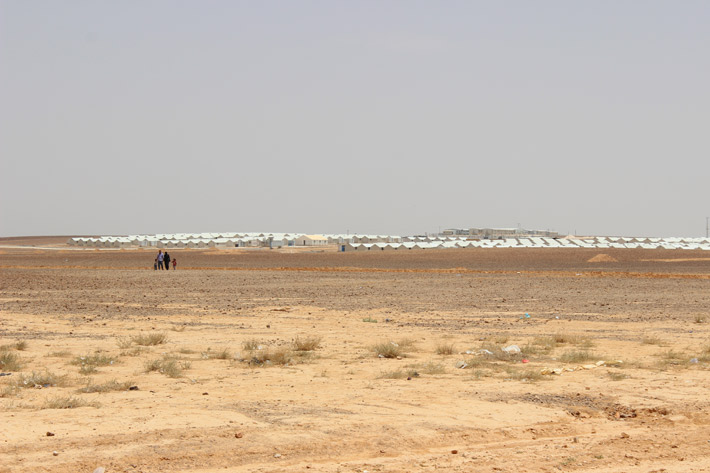
Refugee supplies
Upon entering Azraq, refugees receive a supplies to help them with day-to-day life in the camp. Here are some of the items that a 5-person family receive:
One-off donations
- Sleeping mat (one per person)
- Mattress (one per person)
- Blankets (two per person)
- Solar lantern withmobile phone charger, solar lamp
- Plastic sheet
- Kitchen set (cooking pots, non-perishable food items like rice, oil and canned goods)
- Gas stove and gas cylinder
- Bucket with lid
- Collapsible 10-litre jerry cans (two)
- Family hygiene kit (3 tubes toothpaste, 5 toothbrushes, 30 bars of soap, laundry detergent, plastic wash basin)
Replenished items
- Sanitary napkins (20 napkins per woman aged 12-49 per month, replenished quarterly)
- Diapers (2 or 3 packs of appropriately-sized diapers, replenished monthly for all children up to 2 years old)
With files from Remaz Mussa












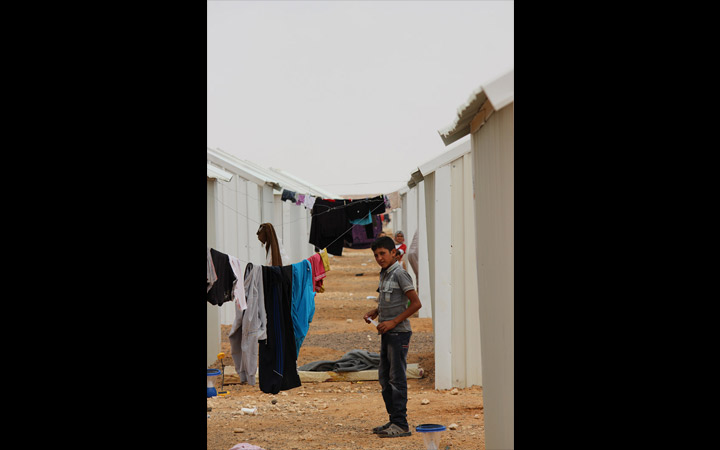



















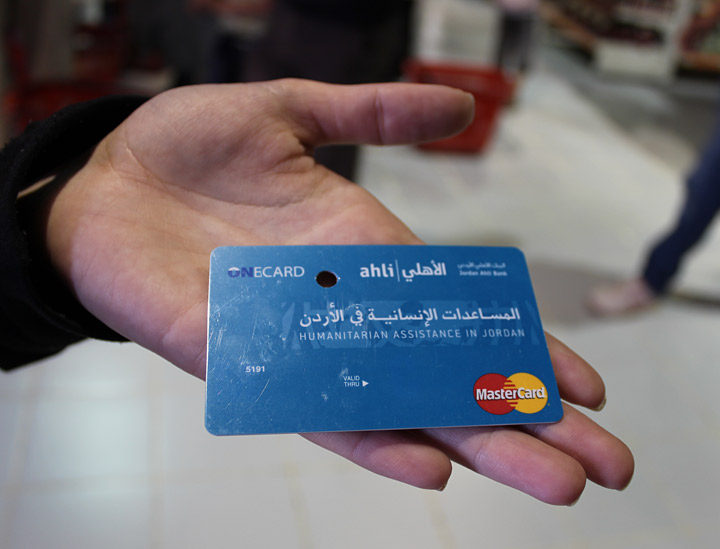


























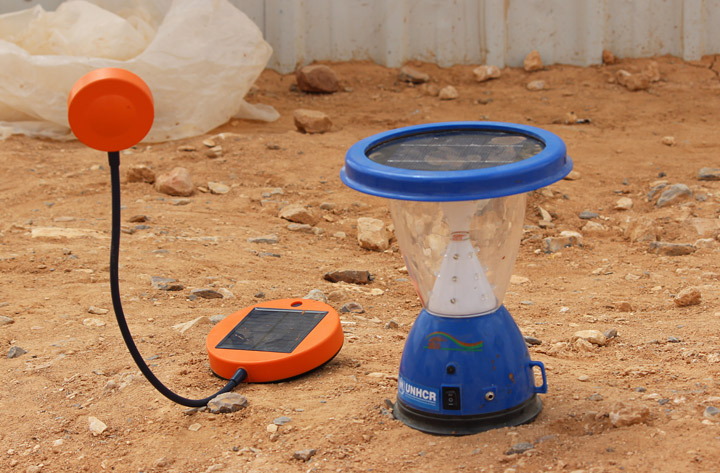
Comments